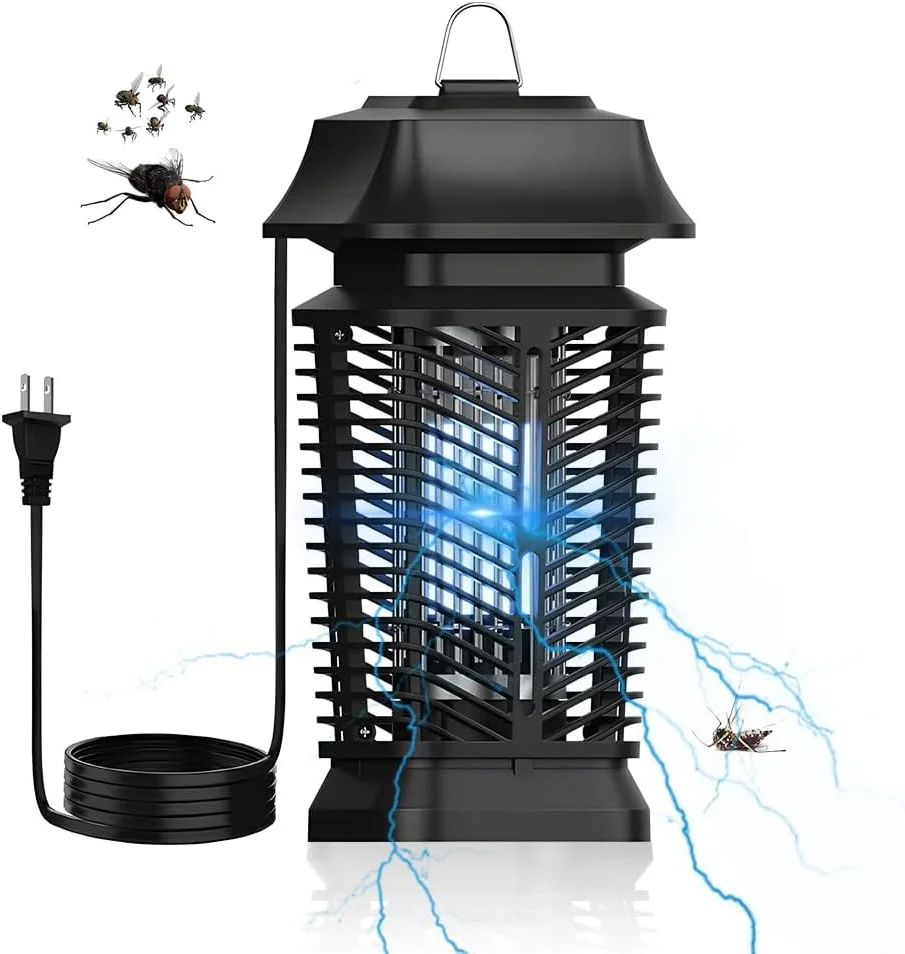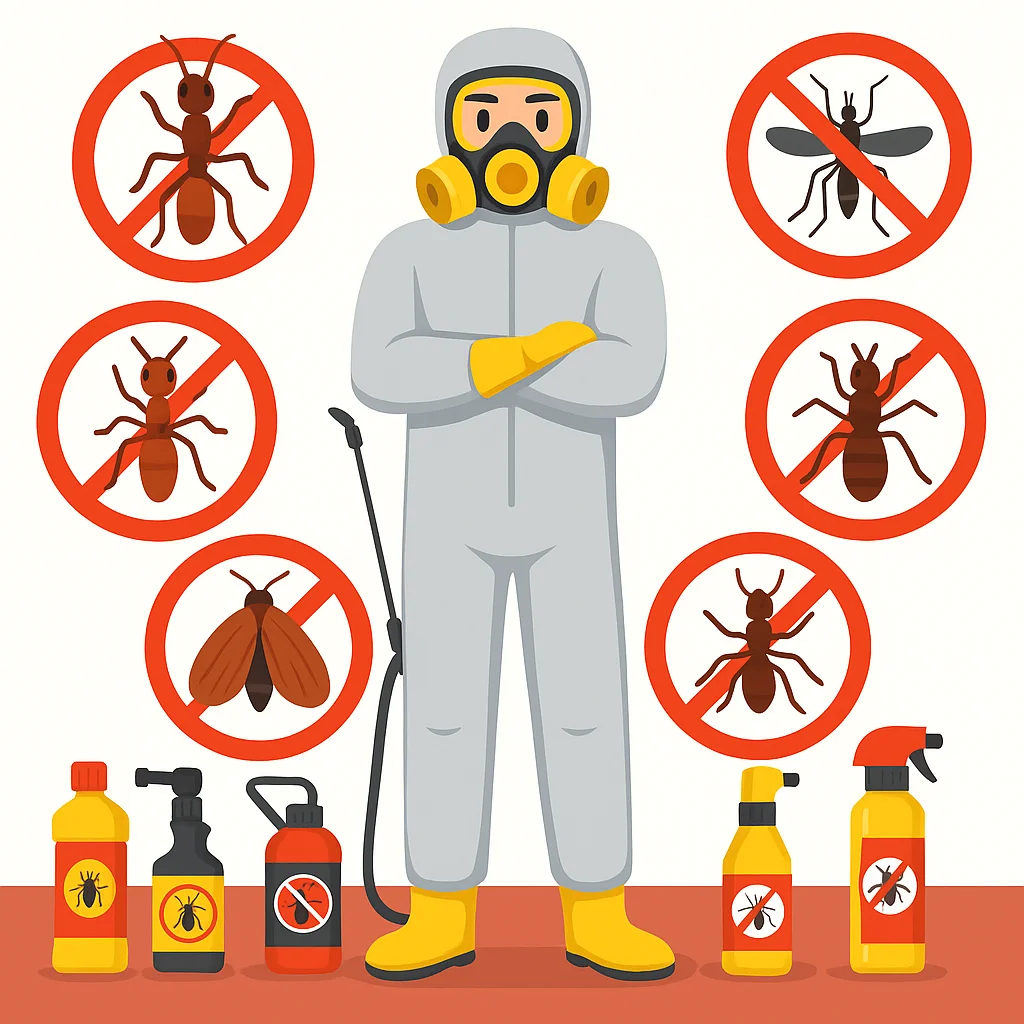Master-planned communities represent the future of integrated residential living,
combining thousands of homes with extensive amenities, commercial spaces, and
recreational facilities in carefully designed environments. These large-scale
developments require sophisticated pest management approaches that coordinate
protection across diverse property types while maintaining the high standards
and quality of life that define master-planned living. Effective master-planned
community pest control addresses the complex challenges of managing pest
populations across vast residential areas with varying building types, landscape
designs, and usage patterns.
From sprawling residential neighborhoods to bustling town centers, master-planned
communities create unique pest management challenges that require comprehensive
coordination and strategic planning. Professional large-scale community pest
management provides the expertise and resources needed to protect entire
developments while maintaining the cohesive, well-maintained environments that
make master-planned communities so desirable. In this comprehensive guide, we'll
explore how comprehensive development pest solutions create healthy,
pest-free environments across the diverse components that make master-planned
communities successful residential destinations.
Managing a master-planned development? Our specialized team offers
large-scale community pest solutions
COMPREHENSIVE and coordinated
master-planned pest management programs designed for complex developments.
Scale your protection today!
Unique Pest Control Challenges in Master-Planned Communities
Master-planned communities face distinctive pest management challenges that
require specialized expertise in coordinating protection across large, complex
developments. Understanding these unique factors helps community managers
develop effective master-planned community pest control strategies
that protect the entire development ecosystem:
-
Scale and complexity coordination Master-planned communities often
span thousands of acres with multiple phases, diverse housing types,
commercial areas, and recreational facilities that require coordinated
pest management approaches. Managing pest control across such large,
complex developments demands sophisticated planning and execution capabilities.
-
Mixed-use environment management These communities combine residential,
commercial, recreational, and sometimes industrial uses that create diverse
pest attraction points and require different management strategies. Coordinating
pest control across varied land uses while maintaining community-wide
protection standards presents significant logistical challenges.
-
Phased development considerations Master-planned communities often
develop in phases over many years, requiring pest management strategies
that adapt to ongoing construction while protecting completed areas.
Balancing pest control in active construction zones with established
residential areas requires flexible, adaptive approaches.
-
Infrastructure and landscape integration Extensive infrastructure
including utilities, drainage systems, transportation networks, and
landscaping creates complex pest habitat and movement patterns that
require comprehensive understanding and management across the entire development.
-
Community standards and expectations Master-planned communities
maintain high aesthetic and quality standards that require pest management
approaches compatible with premium environments while addressing the
diverse needs of thousands of residents across different housing types and price points.
Professional large-scale community pest management addresses these
complex challenges through comprehensive planning, coordinated execution,
and adaptive management strategies that protect entire master-planned
developments while maintaining the quality standards and lifestyle
expectations that make these communities successful.
Pest Management Across Development Components
Master-planned communities integrate multiple components that each require
specialized pest management approaches while contributing to community-wide
pest population dynamics. Understanding these diverse components helps
develop comprehensive protection strategies:
Residential Neighborhoods
Coordinated residential pest management across master-planned neighborhoods
Residential areas within master-planned communities often include diverse
housing types from apartments and townhomes to single-family homes and
luxury estates, each with different pest management needs. Master-planned
residential pest control coordinates protection across housing types
while addressing community-wide pest pressures that affect all residential areas.
Comprehensive residential pest management includes coordinated treatment
timing, shared prevention strategies, and community-wide monitoring
that prevents pest problems in one area from spreading to neighboring
residential zones. This coordinated approach often achieves superior
results compared to individual property treatments while providing
cost efficiencies through economies of scale.
Commercial and Retail Centers
Professional commercial pest management for master-planned community retail centers
Town centers, shopping areas, and commercial zones within master-planned
communities require specialized pest management that addresses food
service establishments, retail stores, and office buildings while
coordinating with surrounding residential areas. Commercial zone
pest management maintains health code compliance and business
operational standards while supporting community-wide pest prevention goals.
Commercial pest management coordinates with business operations, maintains
discrete service delivery, and addresses pest attraction from food
service and retail activities that could impact neighboring residential
areas. Comprehensive approaches often provide cost savings for individual
businesses while maintaining higher effectiveness than isolated treatments.
Recreational and Amenity Areas
Comprehensive pest management for community recreational and amenity areas
Master-planned communities typically feature extensive recreational
amenities including parks, pools, golf courses, fitness centers, and
community centers that require specialized pest management approaches.
Amenity area pest control maintains comfortable, safe environments
for community activities while addressing the unique pest challenges
created by recreational facilities and high-traffic areas.
Recreational pest management emphasizes safety for community members
of all ages, maintains aesthetic standards for premium amenities,
and coordinates with facility operations to minimize disruption while
providing comprehensive protection during peak usage periods and
special community events.
Common Areas and Landscaping
Extensive common areas, landscaping, and open spaces throughout master-planned
communities require coordinated pest management that maintains aesthetic
appeal while preventing pest establishment and movement between different
community zones. Community landscape pest management addresses
both ornamental and functional landscaping that contributes to overall
community pest population dynamics.
Landscape pest management includes irrigation system coordination, plant
selection guidance, and maintenance practices that support pest prevention
while maintaining the visual appeal and environmental benefits that make
master-planned communities attractive. Integrated approaches often improve
landscape health while reducing pest pressure throughout the development.
Transportation and Infrastructure
Transportation networks, utility corridors, and infrastructure systems
within master-planned communities can facilitate pest movement and provide
harborage opportunities that require specialized management approaches.
Infrastructure pest management addresses these potential pest highways
while coordinating with ongoing maintenance and development activities.
Infrastructure management includes utility corridor treatments, transportation
right-of-way management, and coordination with utility providers to address
pest harborage in infrastructure systems. These approaches prevent pest
establishment in infrastructure while supporting the reliable utility
and transportation services that master-planned communities depend on.
Managing Pest Control During Phased Development
Master-planned communities typically develop in phases over many years,
creating dynamic pest management challenges as new construction occurs
adjacent to established residential areas. Phased development pest
management requires adaptive strategies that protect completed
areas while addressing pest disruption from ongoing construction
activities and new development phases.
Effective phased development management includes construction site
pest control, buffer zone protection for completed areas, and progressive
expansion of community-wide pest management programs as new phases
come online. This comprehensive approach ensures that new development
enhances rather than compromises pest control in established areas.
Construction Phase Coordination
Active construction within master-planned communities requires specialized
pest management that addresses construction-related pest attraction while
protecting nearby residential and commercial areas from pest displacement.
Construction pest coordination includes site management, material
protection, and barrier treatments that minimize pest impact on adjacent
completed areas.
Construction coordination involves working with contractors, developers,
and community managers to implement pest prevention during building phases
while maintaining protection for residents and businesses in nearby completed
areas. Proactive management during construction often prevents pest establishment
that could require intensive treatment after completion.
Transition Area Management
Transition zones between completed development phases and active construction
require specialized pest management approaches that address changing conditions
while maintaining protection standards. Transition zone pest management
provides flexible strategies that adapt to evolving development conditions
while ensuring consistent protection across phase boundaries.
Transition management includes temporary barriers, adaptive monitoring,
and flexible treatment strategies that accommodate changing land use patterns
as development progresses. These approaches ensure seamless integration
of pest management as new phases transition from construction to occupancy.
Progressive Program Expansion
Master-planned community pest management programs expand progressively
as new development phases come online, requiring systems that can scale
effectively while maintaining consistent service standards. Progressive
pest program expansion includes planning for infrastructure requirements,
service capacity, and quality maintenance as communities grow to full build-out.
Program expansion planning includes technology infrastructure, service
route optimization, and resource allocation that support efficient pest
management delivery as communities expand. This forward-thinking approach
ensures that pest control effectiveness and efficiency improve rather
than decline as master-planned communities reach full development.
Ready to implement comprehensive pest management across your master-planned
development? Our specialized large-scale community pest solutions
provide the coordination, expertise, and scalability your development deserves –
master your pest management today!
Advanced Technology for Large-Scale Communities
Comprehensive Monitoring Networks
State-of-the-art monitoring networks providing comprehensive community-wide surveillance
Master-planned communities can benefit from the most advanced pest
monitoring technologies available, creating comprehensive surveillance
networks that provide real-time pest population data across thousands
of acres and multiple development phases. Large-scale pest monitoring
enables proactive management that addresses pest issues before they
impact residents or require intensive treatment interventions.
Advanced monitoring networks include wireless sensor systems, automated
data collection, and predictive analytics that optimize pest management
resource deployment while providing community managers with detailed
insights into pest population dynamics across the entire development.
These systems often improve effectiveness while reducing overall
pest management costs through better resource allocation.
Digital Management Platforms
Large-scale pest management requires sophisticated digital platforms that
coordinate services across multiple zones, track effectiveness metrics,
and provide community managers with real-time insights into pest management
activities and results. Digital pest management platforms enable
efficient coordination of complex, multi-zone pest control programs.
Digital platforms provide community managers with dashboards that track
pest management activities, effectiveness metrics, cost management, and
resident satisfaction across all development phases and property types.
Real-time reporting enables informed decision-making and continuous program
optimization that improves results while managing costs effectively.
Predictive Analytics and Planning
Master-planned communities generate extensive data that can be analyzed
to predict pest pressure patterns, optimize treatment timing, and allocate
resources efficiently across large, complex developments. Predictive
pest analytics use weather data, development activity, and historical
pest patterns to anticipate needs and deploy resources proactively.
Predictive systems enable master-planned communities to optimize pest
management investments, reduce emergency treatment needs, and maintain
consistently high service standards across all development phases and
property types. Data-driven approaches often achieve superior results
while providing better cost management and resource efficiency.
Maintaining Community Standards and Quality
Master-planned communities are built around high standards for aesthetics,
quality of life, and community amenities that require pest management
approaches compatible with premium residential environments. Premium
community pest management maintains the exceptional standards that
define master-planned living while providing comprehensive protection
across diverse development components.
Aesthetic Integration
Pest management seamlessly integrated with master-planned community aesthetics
Master-planned communities invest significantly in landscape design,
architectural coordination, and aesthetic standards that require pest
management approaches that enhance rather than detract from visual
appeal. Aesthetic pest management integration uses discrete
methods and equipment placement that maintain community design integrity
while providing comprehensive pest protection.
Aesthetic integration includes concealed monitoring stations, landscape-compatible
treatment methods, and service scheduling that minimizes visual impact
during peak community usage periods. These approaches often improve
community acceptance while maintaining the design standards that make
master-planned communities attractive to residents and visitors.
Quality Assurance Systems
Large-scale pest management requires comprehensive quality assurance
systems that ensure consistent service delivery across thousands of properties
and multiple service teams. Community-wide quality assurance includes
standardized protocols, regular auditing, and performance metrics that
maintain high service standards throughout the entire development.
Quality systems include service verification, resident satisfaction monitoring,
effectiveness tracking, and continuous improvement processes that ensure
pest management quality meets community standards. Comprehensive quality
assurance often improves results while building resident confidence in
community management and pest control effectiveness.
Environmental Stewardship
Master-planned communities often emphasize environmental stewardship and
sustainability that require pest management approaches compatible with
environmental goals. Sustainable community pest management uses
integrated approaches that support ecological balance while providing
effective pest control across large-scale developments.
Environmental stewardship includes habitat preservation, beneficial species
protection, and sustainable treatment methods that support community environmental
goals while maintaining effective pest control. These approaches often
enhance community appeal while supporting marketing and certification
programs that differentiate master-planned communities in competitive markets.
Resident Services and Community Communication
Comprehensive Resident Support
Dedicated resident support ensuring exceptional pest management service experience
Master-planned communities serve thousands of residents with diverse
needs and expectations that require comprehensive resident support
systems for pest management services. Community resident support
provides personalized service, responsive communication, and flexible
options that meet the varied needs of residents across different
housing types and community zones.
Resident support includes dedicated customer service, online portals
for service requests and information, educational resources, and
customizable service options that allow residents to participate
in community-wide pest management while addressing their specific
needs and preferences.
Multi-Channel Communication
Effective communication across large master-planned communities requires
multiple channels and approaches that reach diverse resident populations
with varying communication preferences and technology usage. Community-wide
pest communication uses websites, mobile apps, newsletters, and
community meetings to keep residents informed about pest management
activities and preventive measures.
Multi-channel communication ensures that all residents receive timely,
relevant information about pest management activities, seasonal prevention
tips, and community-wide initiatives that support comprehensive pest
control. Effective communication often improves program participation
and resident satisfaction while building support for community-wide
pest management investments.
Educational Programs and Resources
Large communities benefit from educational programs that help residents
understand their role in community-wide pest prevention while providing
information about pest identification, prevention strategies, and reporting
procedures. Community pest education builds resident engagement
while improving overall program effectiveness through increased participation.
Educational resources include seasonal workshops, online resources,
community newsletters, and demonstration programs that help residents
contribute to community-wide pest prevention goals. Well-informed residents
often become valuable partners in maintaining pest-free communities
while supporting long-term program success.
Economic Benefits and Development Value
Comprehensive pest management provides significant economic benefits for
master-planned communities through property value protection, marketing
advantages, and operational efficiency that support community success
and profitability. Community pest management ROI includes both
direct cost savings and indirect benefits that enhance overall development value.
| Economic Benefit |
Master-Planned Community Impact |
Long-term Value |
| Property Value Protection |
Maintains premium pricing; reduces pest-related property damage;
supports consistent appreciation across all development phases.
|
Higher overall community values; reduced value variability;
enhanced marketability for new phases and resales.
|
| Marketing and Differentiation |
Provides competitive advantage; supports premium positioning;
enhances community reputation and desirability.
|
Faster sales velocity; reduced marketing costs; premium price
maintenance throughout development lifecycle.
|
| Operational Efficiency |
Economies of scale; reduced emergency costs; streamlined
management across multiple development phases and property types.
|
Lower per-unit pest control costs; predictable budgeting;
reduced administrative overhead and management complexity.
|
| Risk Management |
Prevents health code violations; reduces liability exposure;
maintains community reputation and operational continuity.
|
Avoided crisis costs; maintained community standards;
protected development timeline and profitability.
|
Development Investment Protection
Professional master-planned community pest management typically pays
for itself through property value protection, operational efficiency,
and marketing advantages while supporting the long-term success and
profitability of large-scale residential development investments.
Seasonal Master-Planned Community Management
Spring Development Activation
- Community-wide facility preparation
- Construction phase coordination
- Landscape pest prevention
- Amenity area activation
Focus: Prepare entire community for active season
including recreational areas, new construction, and landscape establishment.
Summer Peak Management
- Recreational facility protection
- Commercial area intensification
- Community event support
- High-traffic area management
Focus: Maintain comprehensive protection during peak
community usage and maximum recreational activity periods.
Fall Preparation Programs
- Winter preparation coordination
- Infrastructure protection
- Construction phase transitions
- Facility winterization support
Focus: Prepare community infrastructure and facilities
for winter while transitioning construction to seasonal schedules.
Winter Maintenance Phase
- Indoor facility focus
- Infrastructure monitoring
- Development planning support
- Spring preparation planning
Focus: Maintain protection in active indoor facilities
while planning for spring development and community activation.
Master-Planned Community Success Stories
"PestControl100's comprehensive approach has been essential to our
5,000-home master-planned community's success. Their coordination
across residential, commercial, and recreational areas maintains
the premium environment our residents expect while managing costs
effectively through our phased development process."
- Robert K., Community Development Director, Horizon West
★★★★★
"Managing pest control across 15 different neighborhoods and a town
center was overwhelming until we partnered with PestControl100.
Their master-planned community program provides consistent quality
everywhere while achieving cost savings we never thought possible.
Resident satisfaction with pest management is at an all-time high."
- Sandra M., Community Manager, Celebration Gardens
★★★★★
"The coordinated approach to pest management has been a significant
competitive advantage for our master-planned community. Prospective
buyers consistently comment on the well-maintained, pest-free environment,
and our sales team can confidently promote our comprehensive pest
management as a community amenity."
- Michael R., Sales Director, Sterling Ranch
★★★★★
Frequently Asked Questions
How do you coordinate pest control across such large, complex developments?
We use advanced digital management platforms that coordinate services
across multiple zones, property types, and development phases. Our
system includes GPS tracking, zone-based scheduling, and real-time
communication between service teams. We establish dedicated account
management for each master-planned community with specialized coordinators
who understand the unique layout, phasing, and requirements of large-scale
developments.
What cost advantages do master-planned communities achieve through comprehensive programs?
Master-planned communities typically achieve 30-50% cost savings compared
to individual property treatments through economies of scale, coordinated
scheduling, and shared infrastructure. Our programs eliminate redundant
services, optimize route efficiency, and provide bulk purchasing advantages
that benefit the entire community. Additionally, comprehensive prevention
reduces emergency treatment costs and property damage that can be expensive
to address reactively in smaller communities.
How do you manage pest control during ongoing construction in phased developments?
We develop specialized protocols for active construction areas that
protect completed phases while managing pest disruption from building
activities. This includes construction site pest management, buffer
zone treatments around active areas, and coordination with contractors
to implement pest prevention during construction. Our phased approach
adapts to development timelines and ensures that new construction
enhances rather than compromises pest control in established areas.
What technology do you use to manage pest control across thousands of properties?
We utilize comprehensive digital platforms including GPS tracking,
automated monitoring systems, predictive analytics, and mobile communication
tools that coordinate services across large developments. Our technology
includes wireless sensor networks for continuous monitoring, digital
documentation systems for compliance and reporting, and predictive
models that optimize resource allocation. Community managers receive
real-time dashboards with comprehensive data about pest management
activities and effectiveness across all development zones.
Future Planning and Community Expansion
Master-planned communities require long-term pest management planning
that anticipates future development phases, changing community needs,
and evolving pest pressures over decades of community growth and
maturation. Future-focused pest planning ensures that pest
management systems scale effectively while maintaining quality and
cost efficiency throughout the community lifecycle.
Strategic planning includes infrastructure development, technology
evolution, and service capacity planning that supports community
growth while maintaining the high standards that define successful
master-planned developments. Forward-thinking approaches often provide
competitive advantages while reducing long-term operational costs.
Long-term Infrastructure Planning
Master-planned community pest management requires infrastructure planning
that anticipates community build-out, technology advancement, and changing
service delivery requirements over multiple decades. Infrastructure
pest planning includes service facility locations, technology systems,
and operational capacity that support efficient pest management delivery
as communities reach full development.
Infrastructure planning coordinates with community development plans,
utility systems, and transportation networks to ensure that pest management
capabilities evolve with community growth. Well-planned infrastructure
often reduces long-term operational costs while improving service quality
and efficiency throughout the community development process.
Adaptive Management Systems
Large-scale communities require pest management systems that adapt to
changing conditions, emerging pest challenges, and evolving community
needs over time. Adaptive pest management systems use data analytics,
continuous monitoring, and flexible service delivery that respond to
changing pest pressures and community requirements.
Adaptive systems include technology platforms that evolve with community
needs, service protocols that adjust to changing pest patterns, and
resource allocation systems that optimize efficiency as communities mature.
These flexible approaches often provide superior long-term results while
maintaining cost effectiveness throughout community development cycles.
Community Maturation Support
As master-planned communities mature, pest management needs evolve from
development-focused approaches to long-term maintenance and optimization
strategies. Community maturation pest support includes transition
planning, system optimization, and service evolution that maintains
effectiveness while adapting to mature community characteristics.
Maturation support includes landscape evolution management, infrastructure
aging considerations, and resident service adaptation that ensures pest
management effectiveness improves rather than declines as communities
transition from development to long-term operation and maintenance phases.
Developer and Management Partnerships
Successful master-planned community pest management requires close partnerships
between pest control providers, developers, community managers, and various
service providers that coordinate to create comprehensive protection programs.
Master-planned community partnerships ensure that pest management
integrates seamlessly with overall community operations and development goals.
Developer Collaboration
Strategic developer partnerships ensuring integrated pest management from planning through build-out
Working with developers from the earliest planning stages enables
pest management considerations to be integrated into community design,
infrastructure planning, and construction specifications. Developer
pest partnerships include site planning consultation, construction
specification development, and phased implementation planning that
builds pest prevention into community design rather than adding
it as an afterthought.
Developer collaboration provides opportunities to implement pest-resistant
design features, coordinate infrastructure for efficient service
delivery, and establish pest management systems that support marketing
and sales efforts throughout the development process. Early collaboration
often reduces long-term costs while improving effectiveness and
community appeal.
Community Management Integration
Master-planned communities require pest management integration with
community management operations including HOA coordination, resident
services, and facility management. Community management pest integration
ensures seamless coordination between pest control activities and overall
community operations that support resident satisfaction and community standards.
Management integration includes service coordination protocols, resident
communication systems, and operational integration that makes pest management
a seamless part of community services rather than a separate, disruptive
activity. Effective integration often improves resident satisfaction
while reducing administrative burden on community management staff.
Multi-Vendor Coordination
Large master-planned communities typically involve multiple service providers
including landscaping, maintenance, security, and utilities that require
coordination to optimize pest management effectiveness. Multi-vendor
pest coordination ensures that all service providers support rather
than compromise community-wide pest management goals.
Vendor coordination includes landscape maintenance coordination, construction
contractor collaboration, and utility provider coordination that addresses
pest management considerations in all community service activities.
Comprehensive coordination often improves overall service quality while
reducing conflicts and inefficiencies between different service providers.
Innovation and Industry Best Practices
Master-planned communities provide opportunities to implement the most
advanced pest management technologies and practices available, creating
showcase environments that demonstrate innovation while providing superior
results for residents and community stakeholders. Innovative community
pest management includes cutting-edge technology, sustainable practices,
and integrated approaches that set new standards for large-scale pest control.
Technology Leadership
Large-scale communities can justify investments in advanced pest management
technologies that provide superior monitoring, treatment precision, and
operational efficiency. Technology leadership includes autonomous
monitoring systems, artificial intelligence analytics, and integrated
communication platforms that optimize pest management delivery while
providing comprehensive data and insights.
Technology leadership often provides competitive advantages for master-planned
communities while reducing long-term operational costs and improving
service quality. Advanced technology implementations often become models
for industry best practices while supporting community marketing and
differentiation strategies.
Sustainability Innovation
Master-planned communities increasingly emphasize environmental sustainability
that requires innovative pest management approaches supporting ecological
balance while providing effective pest control. Sustainability innovation
includes biological controls, ecosystem management, and integrated approaches
that support community environmental goals while maintaining pest-free living environments.
Sustainability innovation often enhances community appeal while supporting
certification programs and environmental marketing that differentiate
master-planned communities in competitive markets. Environmental approaches
often provide superior long-term results while supporting community
stewardship goals and resident values.
Research and Development Partnerships
Large master-planned communities provide ideal environments for pest
management research and development that advances industry knowledge
while providing cutting-edge solutions for community protection. Research
partnerships include university collaborations, technology development
programs, and pilot implementations that advance pest management science
while benefiting community residents.
Research partnerships often provide access to emerging technologies and
methods before they become widely available while contributing to industry
advancement and knowledge development. These partnerships often enhance
community reputation while providing superior pest management results
and cost efficiency.
Ready to implement world-class pest management across your master-planned
development? Our comprehensive large-scale community pest solutions
provide the expertise, technology, and coordination capabilities that
ensure your community's success. From initial planning to full build-out
and beyond – partner with the leaders in master-planned
community pest management today!
Master-Planned Development Types We Serve
Our master-planned community pest management expertise serves large-scale
residential developments throughout the United States. We understand
the unique challenges of different development types and scales:
Traditional Master-Planned Communities
Large-scale residential developments with comprehensive amenities require
coordinated pest management across diverse housing types and extensive
recreational facilities. Our traditional master-planned programs provide
the scale and coordination needed for complex, multi-phase developments.
Mixed-Use Developments
Communities combining residential, commercial, and office uses require
sophisticated pest management that addresses diverse pest pressures
while coordinating across different property types and usage patterns.
Our mixed-use programs integrate multiple pest management approaches seamlessly.
Mega-Developments (5,000+ units)
The largest master-planned communities require the most advanced pest
management capabilities including sophisticated technology, extensive
coordination systems, and scalable service delivery that maintains
quality across thousands of properties and multiple development phases.
Nationwide Master-Planned Community Coverage
Serving master-planned communities nationwide with comprehensive large-scale pest management expertise









